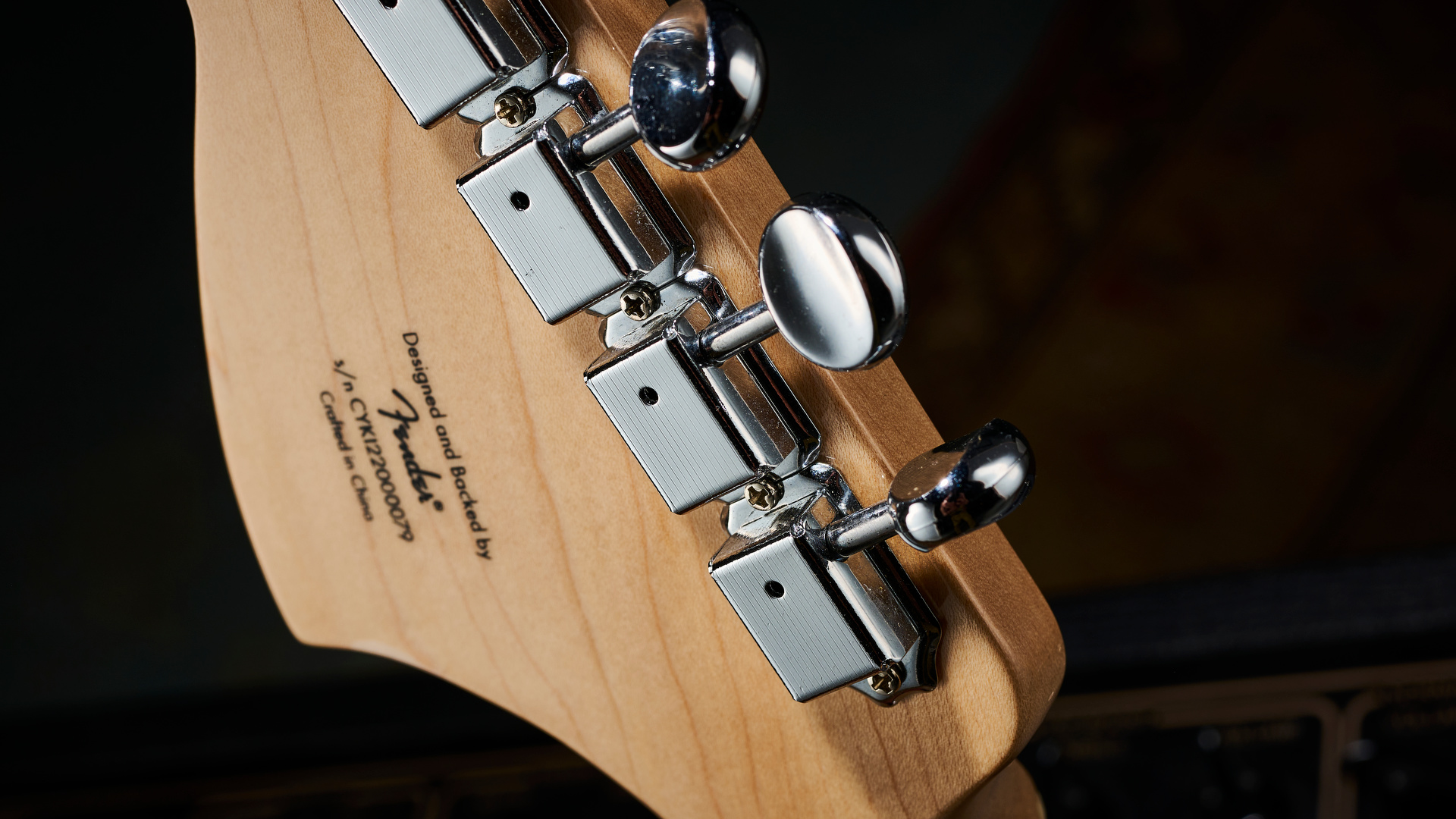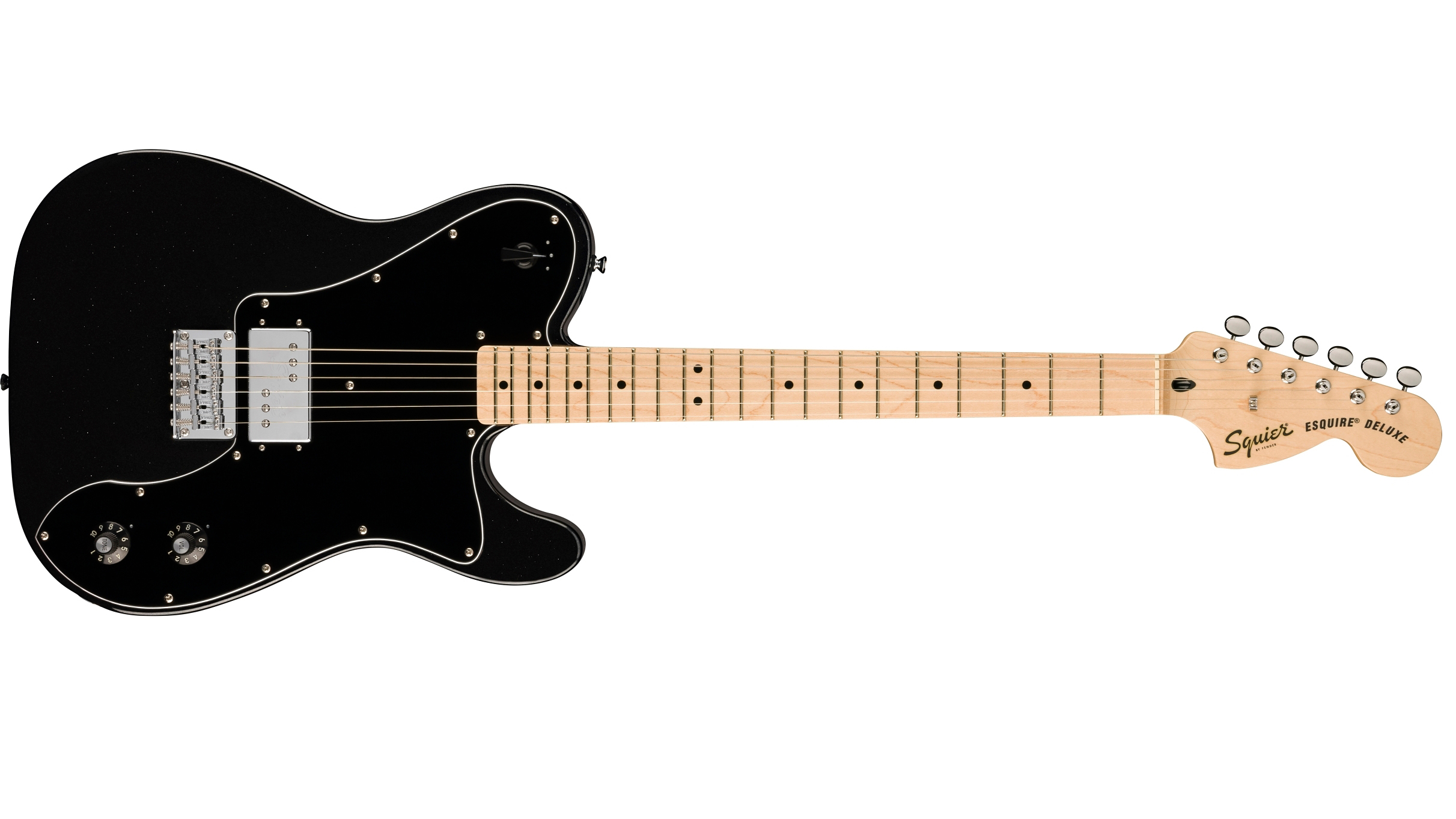MusicRadar Verdict
Rather than a quirky 'what if' model, this one-pickup guitar makes a lot of sense with surprising depth and versatility to support its appealing looks and playability. Another win for Squier and the Paranormal series.
Pros
- +
A very playable blend of two Fender models
- +
Three switching options get a lot from a single pickup
- +
Wide Range-style 'bucker aides the versatility
Cons
- -
Our test guitar had a QC issue – hopefully not the norm
MusicRadar's got your back
Squier Paranormal Esquire Deluxe review: What is it?

The Paranormal series has blown away any preconception that Squier is merely the home for affordable versions of Fender electric guitars. Even away from the series' alternative mashups and hybrids there's a sense Squier often offers models you simply won't find in the higher-end lines of big bro. And we're all for it; Squiers aren't just great modding platforms, the best examples can sometimes give Fenders a run for their money straight out the box. And these Paranormal models often don't stick around too long so they can become even more desirable before long.
The latest batch is filled with temptation for those of us looking for any excuse to add to the guitar or bass to the rack – from a Gibson-scale Strat to a Jazzmaster XII and a Rascal Bass. Then there's this; a one-pickup Tele Deluxe with the Esquire twist we're now surprised Fender didn't think of issuing before. Can this new take on the Esquire offer a one-pickup Fender guitar with fresh appeal?

The original Esquire was the very first solid-body guitar offered by Fender, way back in 1950. When the design gained a second pickup it was named the Broadcaster, later renamed the Telecaster. That one worked out pretty well for Fender, but the Esquire has remained a cult concern – few contemporary players use them, especially compared to single pickup guitars like the Les Paul Junior. And the Esquire tended to be even more trebly than a Tele and more of an acquired taste.
Even though it's a single-pickup electric guitar, the design aims to squeezes as much out of its potential as possible on the wiring side with a three-way rotary chicken head knob
This new take on the design sits in the higher end of the Squire price scale, but not so high you can expect that the Deluxe staple wide-range humbucker to be the true Cunife variety as we saw on the $2,000+ Fender American Vintage II 1975 Telecaster Deluxe. Instead it's one of the variations on the them Fender have been making between the '70s and the reissue of the Cunife design a couple of years ago.
Even though it's a single-pickup electric guitar, the design aims to squeezes as much out of its potential as possible on the wiring side with a three-way rotary chicken head knob for standard humbucking sound, coil split and lastly, a volume and tone bypass. The latter option echoes the 1951 iteration of the Esquire's tone bypass to deliver a hotter output.
Squier Paranormal Esquire Deluxe review: Performance and verdict

The most important things about a guitar are how cool it looks and whether you like the way the neck feels – sounds can be changed to some extent (though this guitar makes that less of an easy option as I'll explain later). This ticks both boxes with a very appealing take on black with its lowish-key metallic sparkling in the light, and a standard C-shape neck that's classic blueprint – meaty enough to be worthy of that chunky '70s Strat headstock but shallow enough not to alienate modern C players. We'd prefer a satin back to it but that's easily sorted with a couple of minutes and some 0000 steel wool.
Want all the hottest music and gear news, reviews, deals, features and more, direct to your inbox? Sign up here.

Any suggestion this review guitar has been cherry-picked is dispelled by the jacket socket enclosure coming away from the body. Tightening its nut fails to address the whole casing not being flush. Sixteen screws later I try to see if it's something I can fix from the inside. No dice, it simply seems to be a bad fit for the routing and I'm not getting a drill out for a review guitar. It's a strange QC lapse to discover but we must just be unlucky. Elsewhere it's largely a home run.

While I'm not a fan of Fender's vintage style saddles because the exposed grub screws rub on my picking hand (I always replace them on Fenders for aftermarket steel block saddles), I am partial to the added standing comfort of the Tele Deluxe's belly cut contouring on the rear and glad to see it present and correct here. As a fan of lighter-weight Fenders, the 7lbs of guitar here will do nicely too. The single pickup obviously helps reduce the weight too, which brings me to the tones.
While I was snooping around under the hood I found the pots are Alpha 250k with a 022uf capacitor, but also have some notes for all you prospective modders out there. You may be aware the Fender Wide Range pickup size is larger than the usual covered PAF-style humbucker. The obvious upgrade for this guitar is one of the recently reissued Fender Cunife Wide Range humbuckers, but the coil-split here requires four-conductor wiring that Fender doesn't currently offer on it. Some third-party companies do with their take on the design (I've got one) if you want to retain the coil-split.
Swapping to a standard-size humbucker will also require a custom pickguard to be made because this one is an anomaly in the catalogue – and we're fans of the notches here that indicate where your tone and control volume is set. But I'm getting ahead of myself – as this guitar is going all-out to offer variety on the single pickup it already has, what's the stock experience?

The humbucker here doesn't have the kind of Cunife top-end attack, and orchestrated chime where you feel all the strings ringing with some separation in chords, but it's a janglier character than most. An appealing alternative for those of us tiring of the darker tonality of humbuckers but still wanting the fullness with some added cut? I'd say so.
The tone and volume bypass adds brightness if you want to take this character further. It's rawer driven, but it's interesting to explore the versatility these two voices provide; using the tone and volume controls to shape the middle full humbucker position and then switching to the full brightness of the bypass. Not a bad substitute for a second pickup, and also a second set of tone and volume controls because turning down your gain with the master volume and then switching to the pickup's bypass position can take you from clean to driven immediately.

The coil-split has the inevitable drop in bottom end, but again its thinner and comparatively airy, slightly piezo acoustic, quality can be another effective contrast to switch to for parts. It's not long before any potential modding plans are far from my mind – this offers an excellent range of tones just as it is. Not only is this a really appealing medium output pickup for clean tones, but the ringing higher end adds character to overdriven chords that breathe free of the compression fatter buckers can have. It's a distinct and really appealing combination that showcases Fender's ability to successfully rework its own designs in the Squier line while keeping prices accessible.
MusicRadar verdict: Rather than a quirky 'what if' model, this one-pickup guitar makes a lot of sense with surprising depth and versatility to support its appealing looks and playability. Another win for Squier and the Paranormal series.
Squier Paranormal Esquire Deluxe review: Hands-on demos
Get Offset
Peach Guitars
Andertons
Squier Paranormal Esquire Deluxe review: Specifications

- TYPE: Solid-body electric, made in Indonesia
- BODY: Poplar, gloss polyester finish
- NECK: Maple C-shape, bolt-on
- SCALE: 25.5”
- FINGERBOARD: Maple, 9.5" radius
- FRETS: 21, Vintage Tall
- ELECTRICS: 1 x Fender Designed Wide-Range humbucking
- CONTROLS: Master tone, master volume
- HARDWARE: Vintage-style string-through-body hardtail bridge
- WEIGHT OF REVIEW GUITAR: 7lbs / 3.1kg
- CASE: Not included
- FINISHES: Metallic Black (as reviewed), Mocha, Blue Sparkle (Fender.com exclusive)
- CONTACT: Fender

Rob is the Reviews Editor for GuitarWorld.com and MusicRadar guitars, so spends most of his waking hours (and beyond) thinking about and trying the latest gear while making sure our reviews team is giving you thorough and honest tests of it. He's worked for guitar mags and sites as a writer and editor for nearly 20 years but still winces at the thought of restringing anything with a Floyd Rose.
